How To Use Nursing Home Mobile Lifting Equipment
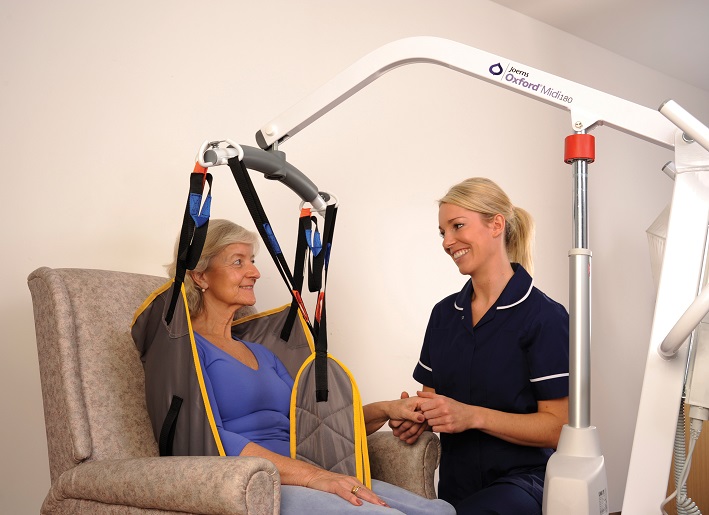
The use of mobile hoists, tracking hoists and stand aids has now become an integral part of care within our care facilities and in the community to assist carers in the moving of residents and to reduce healthcare related injuries to carers and staff.
Mobile Hoists Or Sling Hoists Are The Most Used Hoists In Care Homes
Tracking or ceiling hoists are more used in care in the home or more specialised environments such as long-term residency and schools. As a permanent fixture, it requires only one person to be able to move a person in a sling from one area to another. This makes them ideal for use when single-handed care is an option.
Stand aids or Stand-assist hoists are for people who can hold their own weight but need help with moving into a wheelchair from a chair or bed.
Using a hoist to move a patient can be hazardous for both carers and patients, so it is imperative that carers are confident in how to use hoists effectively and safely.
Types Of Hoists
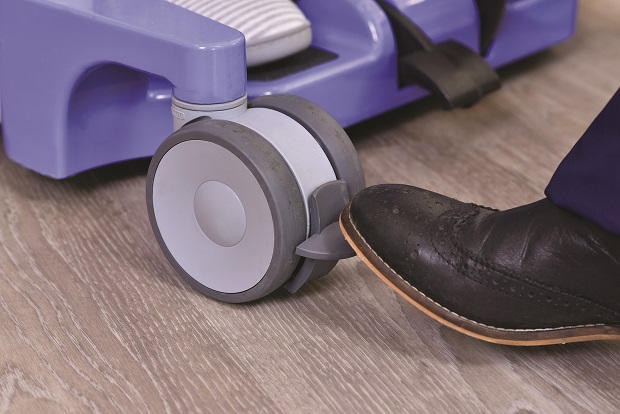
Mobile Hoists
Mobile hoists have the frame/chassis mounted on castors with brakes. This allows the hoist to be moved short distances such as between a wheelchair and a bed. The hoisting mechanism may be manual or electronically powered and controlled with a remote handset. The legs on the chassis can usually be spread to gain access around large chairs or wheelchairs. The bed must allow the hoist chassis to fit underneath it (a divan bed does not usually allow this).
When considering a mobile hoist, you need to take into account the space required to move and turn the hoist, especially when a person is being carried. If the hoist is to be used in a bedroom or lounge, for example, the relevant area must be cleared of other furniture and clutter. The castors on most mobile hoists are small and liable to catch on uneven surfaces. You are advised to remove any loose rugs, worn carpets etc. If going from one room to another, doorways or corridors need to be wide enough to accommodate the hoist. A study looking at the amount of space required to operate a hoist recommended allowing 3.6m of available space next to a bed to be able to manoeuvre a hoist and service user easily and safely (Hignett 2005).
Attached to the boom is a spreader bar. These vary in design and usually have two, four or six hooks to which the sling can be clipped or hooked onto. It is good if the spreader bar has a padded covering as this protects the resident from harm should the bar get too close and accidentally knock them before or after lifting.
Ceiling Track Hoists
A ceiling track hoist is a permanent installation into a home, or other environment, which allows a service user, held in a sling, to be moved along a single or network of tracks between locations. It is more expensive to install, but it requires less space and less effort from the carer.
Ceiling track hoists provide a powered lift of the service user but may then be powered or manually moved between locations (traversed). The motor is usually at track height. In order to charge it, it has to be moved to a charging station when not in use.
Other motor units are available from certain manufacturers which are portable and usable between particular designs of track.
A structural survey is always required before a ceiling track hoist can be installed.
Stand Aid/Stand-Assist Hoists
A standing hoist supports the user with a sling around the upper back, under the arms and a band around the upper thighs. The user positions their feet onto the footplate and braces their knees against the adjustable height pad. Whilst the user holds onto the frame, the hoist gently lifts them to a standing position providing continuous support. Depending on the model, such a hoist can be used for transfers or to assist with walking. The user must have good upper body strength and control and some weight-bearing ability.
Static Hoists
Static hoists tend to be installed and used for one particular purpose, such as getting in and out of the bath, getting in and out of a swimming pool, or riding for disabled people. The metal frame is securely fixed, usually to the floor, with a seat or sling which pivot from the frame and can be raised or lowered. The hoisting mechanism may be manual or electronically powered, controlled with a remote handset.
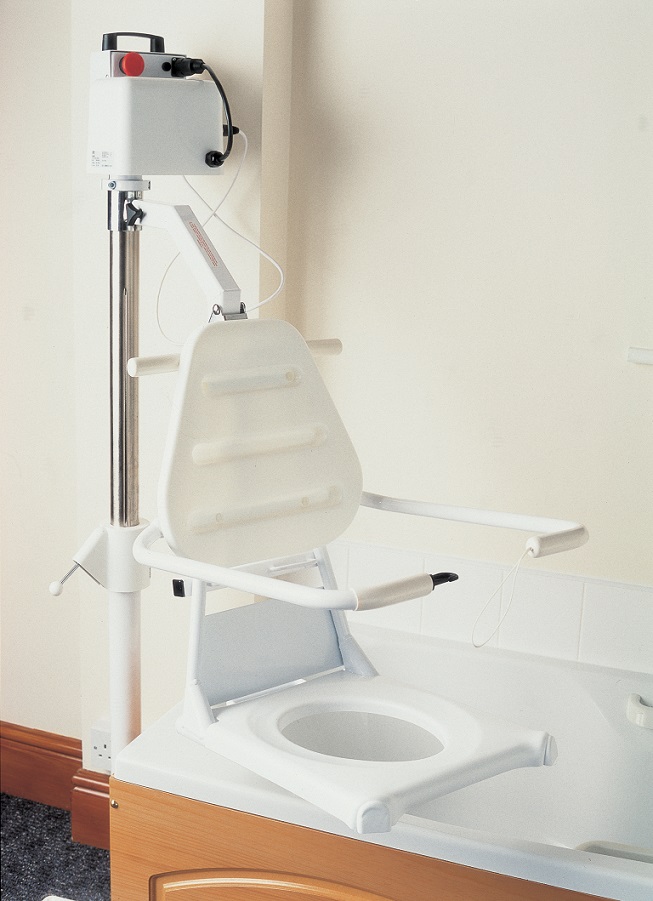
Bath/Bathroom Hoists
A bath hoist is usually static. The hoist usually lifts a rigid plastic bath chair with simple arm rests/bars which raise and lower each side. On some models the seat is detachable from the hoist and will fit onto a mobile chassis frame once out of the bath, allowing the person to be wheeled from the bathroom.
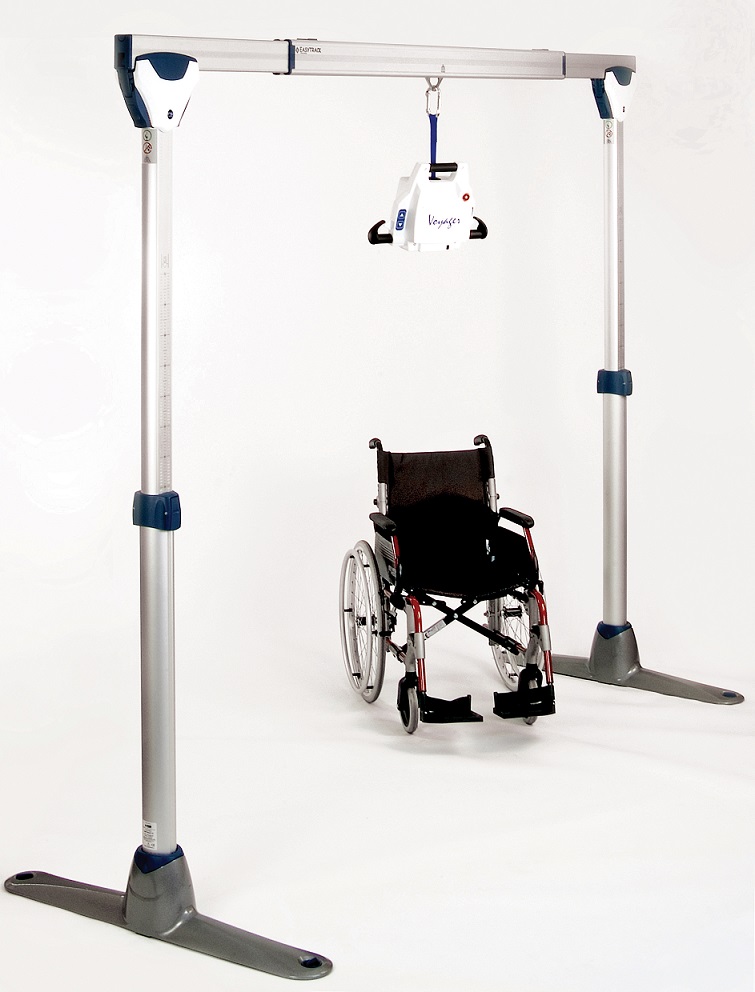
Gantry Hoists
A gantry system is a heavy frame standing over the chosen location, such as the bed. A hoist is suspended from it and can be moved in a linear fashion, along the gantry, transferring the service user - from the bed to a chair, for example.
Portable Hoists
A portable hoist can be dismantled for transportation. It may remain as a single folded unit or be packed into several bags. The unit is still quite heavy, which may not be suitable for a less able carer to manage.
Batteries
It is advisable to have two batteries for a powered mobile hoist, so one can be charging while the other is used. Once fully charged, a battery can be disconnected and stored ready for use. If a battery remains unused for some time it should be recharged periodically to maintain it. Check the manufacturer’s instructions for further details.
A ceiling track hoist usually has a ‘station’ where it needs to be positioned in order to charge when not in use.
The Basics Of Using A Hoist
The procedure of using a mobile hoist, also called a sling hoist or patient lifting hoist, needs the correct manual handling training courses. These are imperative for any carer who needs to lift or move a person from one place to another. Training will also help with the understanding of risk assessments and mobility care plans.
What Is The Risk Assessment?
The risk assessment will assess the resident for using a hoist - in consultation with colleagues and with reference to the resident’s mobility care plan.
To carry out a risk assessment, determine how many staff will be required (usually two), and ascertain which type of hoist is suitable to use. NB: There is no regulation as to how many staff are needed with the hoist as most are designed to be used by one person. Care facilities will have policies in place regarding moving and handling, and from a staff safety and person safety point of view, recommendations normally state the use of two people to complete lifting procedures.
Mobility care plans should document the hoist and sling type, including the sling size. Check the plan before any procedure is undertaken.
Think Safety First
Explain the procedure to the resident involved. Advise them that staff will use the hoist to lift them safely and without hurting them, and that they may be asked, if they are able, to carry out simple instructions such as holding their arms crossed over their chest.
Ensure the environment is safe.
Wash and dry hands; don a plastic apron and gloves.
Reassure the person at all times. Some people may fear being dropped when lifted in a hoist.
Prepare equipment. Always check the hoist before use. Check it has been maintained; there should be a sticker on the hoist indicating the date of the last maintenance check - this should be every six months. This is called a LOLER test and needs to be completed to allow for compliancy. HCSUK has a dedicated service team who can advise on LOLER and service for all hoists to make sure you are compliant with CQC Regulations.
The Importance Of Correct Sling Choice
Select the correct sling for the person, taking into account their body shape and size. A sling will be single person use to avoid cross contamination and to make sure it is fitted to the individual. It’s also important to check that the sling is suitable for the procedure for which it is required, such as lifting, transferring, toileting or bathing.
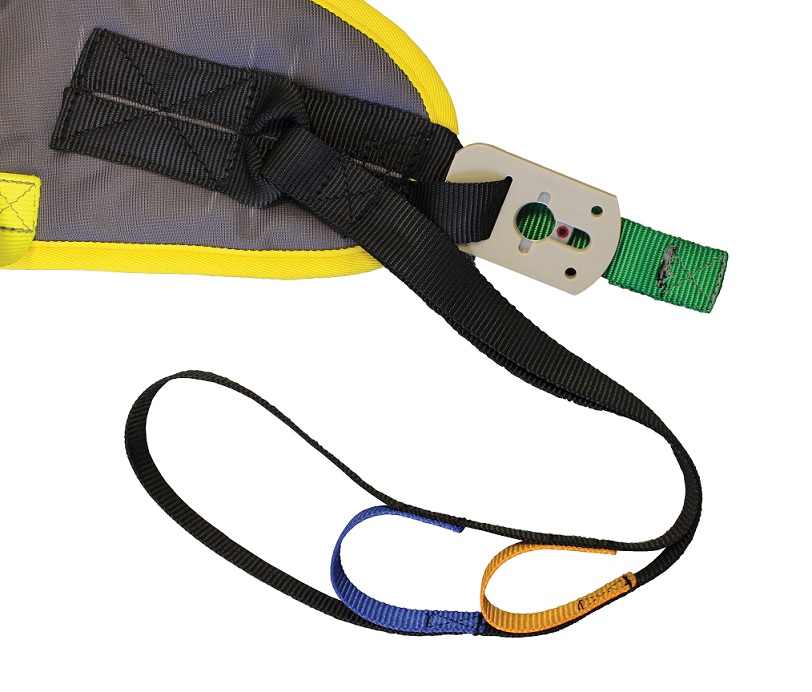
Check that the slings to be used are compatible with the particular hoist. Do not use slings that are incompatible with the hoist. These will be either a loop system or a clip system hoist – each sling is different.
Inspect slings, and the attachments, for wear and tear. Check any maintenance stickers or labels on the slings - these should also be weight tested under LOLER, every six months.
Check the hoist’s weight limit. This will be indicated on the hoist, usually on the main boom. Ensure the hoist is suitable for the person’s height and weight. Bariatric hoists are available for higher weights but need to be assessed for safe use in the care environment.
Ensure the person’s privacy and dignity is maintained. Check clothing and movement maintains the user’s dignity at all times.
Preparing The Lift
If the movement is from a chair or a bed, ensure the brakes are off, with the boom in its lowest position. The hoist will find its own level when lifting and will move in accordance to the weight change and you will need to adjust slightly so as not to cause the person to be slid across a surface, causing damage to the skin. If being moved to another chair or bed, check the brakes of these items are on – always refer to a check sheet.
Place the sling. If the person is on the floor or on a bed, assist them to roll over. If they are on a bed, raise it to an acceptable height so you can roll and place the sling under them. If the lift is from the floor, staff may be required to kneel or consider an appropriate piece of equipment which can raise from the floor into a sitting position.
Place the sling alongside the person’s back and as far under as possible. It is important the bottom edge of the sling is as far as possible under the hip. Bunch the sling slightly before moving the person onto their back, then ease the other way to pull the sling through. Ensure that the leg slats are under the thighs. Care should be taken if there is a urinary catheter in situ.
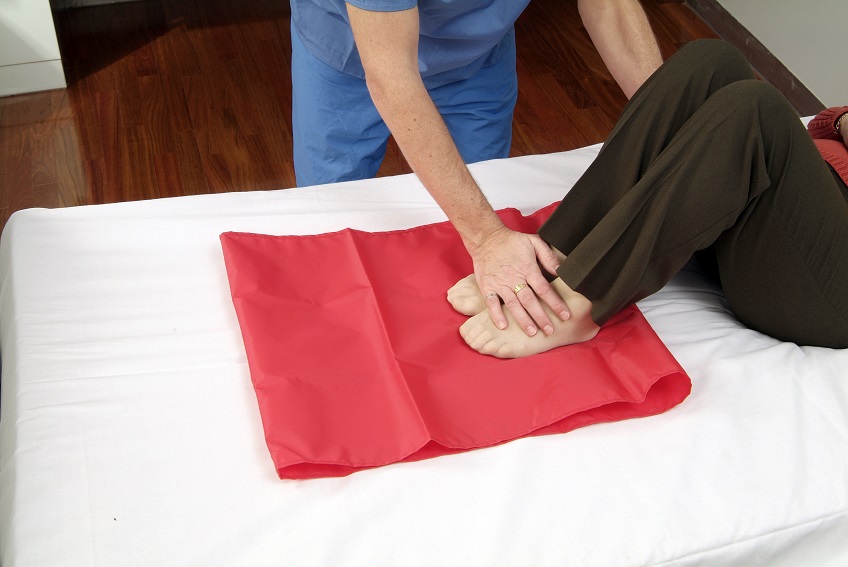
Alternative Method
If the person cannot roll, two flat slide sheets can be eased into position under them and the hoist sling slid between the two slide sheets. Staff must receive training on this manoeuvre.
Once the sling is in place, check that the lower edge of the back of the sling is under the hips. If the sling is of the correct size, the crown of the head should be on the sling, if a high-back sling is being used. Follow manufacturers’ instructions for each sling type used.
Attach the leg and chest attachments to the hoist’s spread bar. Some attachments are passed through each other and crossed before they are attached to the spread bar. See manufacturer’s instructions and follow the training guidance.
Hoist the person up a small distance, then check the sling attachments are secure before continuing with the full lift. If using a sling hoist, do not have the hoist brakes on when hoisting, except when hoisting a patient on a sloped surface or from the floor. The hoist will balance and find its own centre of gravity when the brakes are off. Do not hoist patients from an angle as this may cause the hoist to tilt, especially if the patient’s weight is close to the hoist’s limit.
Raise for clearance, not to the hoist’s height capacity unless necessary - the person may find it more fearful if raised to the highest position. Hoists can be very intimidating.
Check with the person at all times while lifting with the hoist and provide encouragement and reassurance. Some people may become distressed and staff should ease their anxieties by talking to them and keeping close while they are in the hoist.
Never leave a person unattended in the sling and hoisted.
Manoeuvre the hoist and person to the desired position, then lower.
Once the patient is in position, unhook or unclip the attachments and move the hoist away from them. Then remove the sling.
Generally, slings are not left underneath a person unless specifically designed to be. Any decision to do this must be based on assessment and documented. Staff should seek advice on choice of sling in such cases and should try to resolve reasons for leaving a sling in situ; for example, by a change of chair type.
Ensure the person is comfortable.
Think about the distance.
For longer travel, either use a wheelchair or dedicated transporter instead of a hoist. There is always the possibility of a hoist tipping or the person in the hoist panicking which will cause the hoist to tip.
Safe Storage
Remove the hoist to its storage place.
Ensure the hoist is clean and on charge (some hoists have battery chargers and one of these should always be on charge).
Follow local laundry procedures for hoist slings after use.
Always ensure slings which contain Velcro are laundered and stored with the Velcro straps attached together. This prevents ‘pilling’ damage of sling material where Velcro is in contact with the material and lengthens the life expectancy of the sling.
Wash and dry hands according to procedures.
Disposable, one-person slings are useful as they can be allocated to a person for a short stay and disposed of. This reduces infection risk.
In order to safely complete any moving or handling tasks in accordance with best practice guidance, it is important to take a number of key considerations into account. Our latest Moving And Handling Check Sheet has been specifically designed to guide you through the complete moving and handling process, from start to completion, asking key questions on the environment, equipment, training and competence to prompt you to operate safely and with confidence at all stages of manoeuvres.
You can download our Moving and Handling Check Sheet here.
Safe use of lifting equipment. Lifting Operations and Lifting Equipment Regulations 1998.
Safe use of work equipment. Provision and Use of Work Equipment Regulations 1998.
Approved Code of Practice and guidance L22 (Third edition) 2008, Health and Safety at Work etc
Act 1974 (c.37) and updated care standards, Care Standards for Nursing revised 2015.
Application of the Lifting Operations and Equipment Regulations in health and social care HSIS4
Getting to Grips with Hoisting – HSE Information Sheet No3:
LOLER 98: Lifting Operations and Lifting Equipment Regulations (LOLER) 1998: Open learning guidance HSE Books 1999 ISBN 978 0 7176 2464 5
Simple guide to the Lifting Operations and Lifting Equipment Regulations 1998 Leaflet INDG290 HSE Books 1999 www.hse.gov.uk/pubns/indg290.htm
Simple guide to the Provision and Use of Work Equipment Regulations 1998 Leaflet INDG291 HSE Books 2008 www.hse.gov.uk/pubns/indg291.htm
Thorough examination of lifting equipment: A simple guide for employers Leaflet INDG422 HSE Books



